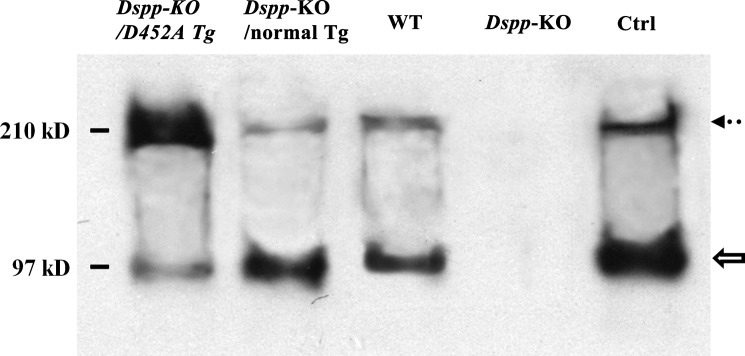FIGURE 3.
Western immunoblotting to detect DSPP and DSP in the NCP extracts from mouse dentin. Western immunoblotting with polyclonal anti-DSP antibodies was used to detect DSPP and DSP in the dentin extracts from the four types of mice. The partially purified rat dentin extract (0.1 μg) containing rat DSPP and DSP was used as a positive control (Ctrl). The Western immunoblotting results from a representative fraction (fraction 29, 60 μl) are shown here. While DSP (hollow arrow) and DSPP (dotted arrow) were detected in the dentin extracts from the Dspp-KO/D452A-Tg, Dspp-KO/normal-Tg, and WT mice, the ratios of DSP to DSPP among these three types of samples were remarkably different. Based on our integrated calculation from triplicate analyses (n = 3) using the image J program, we estimated that the ratio of DSP to DSPP in the Dspp-KO/D452A-Tg mice was 1:10, while that in the Dspp-KO/normal-Tg mice was 15:1. In other words, if the quantity of DSP was used for normalization, the amount of DSPP in the Dspp-KO/D452A-Tg mice would be ∼150 times that of the full-length protein in the Dspp-KO/normal-Tg mice. The findings from both Stains-All and Western immunoblotting analyses showed that the D452A substitution effectively blocked the proteolytic processing of DSPP in the mouse teeth.

